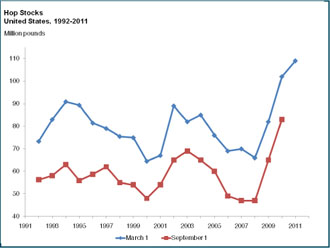The volume of non-alcoholic beer consumed worldwide is on the rise. According to The Economist (full citation below), the volume of non-alcoholic beer consumption globally was 80% higher in 2012 than it had been in 2007. Part of this rise is the result of increased consumption of this beverage in the Middle East. Increasing penalties for drunk driving in several European countries has also been seen by industry analysts as a contributor to the rise in demand for non-alcoholic beer.
Today’s market size is the volume of non-alcoholic beer sales globally in 2012.
Geographic reference: World
Year: 2012
Market size: 2.2 billion liters (by way of comparison, world consumption of beer annually is in the range of 148 billion liters)
Source: E.H. “Why Are Sales of Non-alcoholic Beer Booming?” The Economist, August 11, 2013, available online here.
Posted on September 17, 2013

